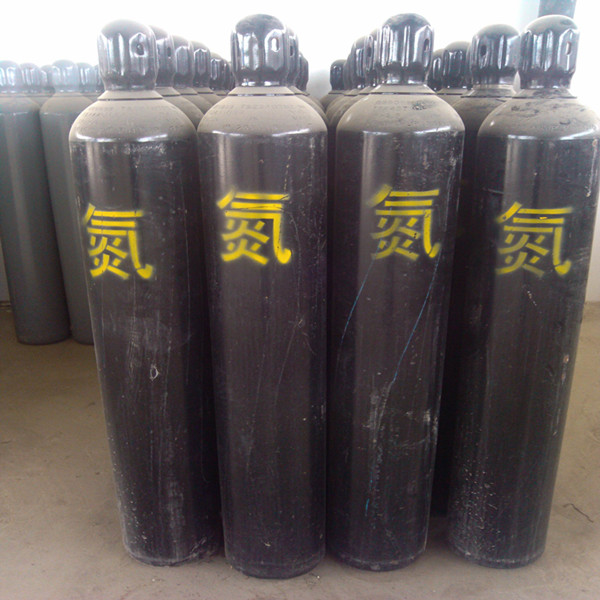Nitrogen
Chemical formula: n‹
CAS login No.: 7727-37-9
Appearance: colorless and odorless gas
Molecular weight: 28.013
Purity: 99.999%
Package: 40L
Gas content: 5.5m3
Name | Purity | Cylinder volume | Filling capacity | pressure | Valve model |
High purity nitrogen | 100% | 2L | / | 10MPa | Manganese steel /qf-2/qf-2c/ aluminum bottle qf-21a |
High purity nitrogen | 100% | 4L | / | 10MPa | Manganese steel /qf-2/qf-2c/ aluminum bottle qf-21a |
High purity nitrogen | 100% | 8L | / | 10MPa | Manganese steel /qf-2/qf-2c/ aluminum bottle qf-21a |
High purity nitrogen | 100% | 40L | / | 13Mpa | Manganese steel /qf-2/qf-2c |

Gas description
Nitrogen, with the chemical formula of N2, is usually a colorless and odorless gas, and generally nitrogen has a lower density than air. Nitrogen accounts for 78.08% (volume fraction) of the total atmospheric volume and is one of the main components of air. Under standard atmospheric pressure, when nitrogen is cooled to -195.8 ℃, it turns into colorless liquid. When it is cooled to -209.8 ℃, liquid nitrogen turns into snow like solid. The chemical property of nitrogen is not active, and it is difficult to react with other substances at room temperature, so it is often used to make preservatives. However, under the condition of high temperature and high energy, it can be chemically changed with some substances to produce new substances useful to human beings.
Main purpose
The main way for human beings to effectively utilize nitrogen is to synthesize ammonia, but the requirements are very high. In recent years, people are trying to understand the mechanism of plant nitrogen fixation, and strive to use chemical methods to simulate biological nitrogen fixation, so as to realize the development and utilization of nitrogen resources in the air under mild conditions. Nitrogen is mainly used to synthesize ammonia. The reaction formula is (under high pressure, high temperature, and catalyst. The reaction is reversible) or it is an important raw material for synthetic fiber (nylon, acrylic), synthetic resin, synthetic rubber, etc. Nitrogen is a nutrient element that can also be used to make fertilizer. For example: ammonium bicarbonate NH4HCO3, ammonium chloride NH4Cl, ammonium nitrate NH4NO3, etc.
Due to the chemical inertia of nitrogen, it is often used as a protective gas, such as melons, fruits, food, and bulbs. In order to prevent some objects from being oxidized by oxygen when exposed to air, filling the granary with nitrogen can make the grain not moldy, not germinating, and can be stored for a long time. Liquid nitrogen can also be used as deep refrigerant. As a refrigerant, it is often used in the operation of removing spots, bags, beans, etc. in the hospital. The spots, bags, beans, etc. will be frozen off, but it is prone to scar, so it is not recommended to use. High purity nitrogen is used as carrier gas for chromatograph and other instruments. Used as shielding gas for bright annealing of copper tubes. It is used as laser gas of laser cutting machine together with high-purity helium and high-purity carbon dioxide. Nitrogen is also used as a protective gas for food preservation. In the chemical industry, nitrogen is mainly used as protective gas, replacement gas, washing gas and safety guarantee gas. Used as protective gas for aluminum products, aluminum profile processing, aluminum thin rolling, etc. Used as protective gas for reflow soldering and wave soldering to improve welding quality. It is used as a protective gas in the production of float glass to prevent tin bath oxidation.






